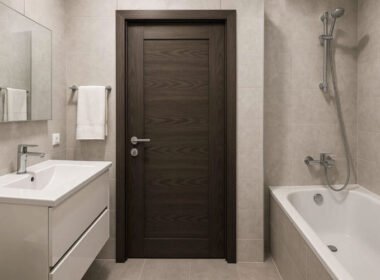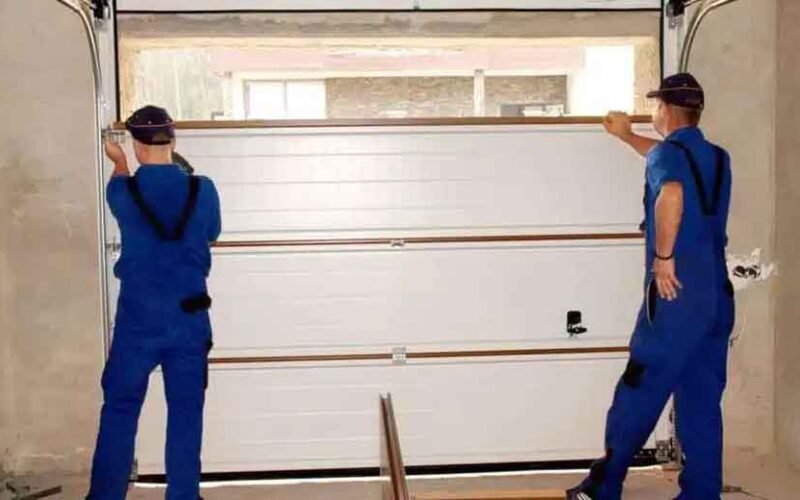Garage doors are more than just an entry point for vehicles; they’re an integral part of a home’s safety, energy efficiency, and daily functionality. A garage door that is out of alignment or poorly balanced can cause mechanical failures, increase wear and tear, and even pose serious safety hazards. Homeowners may not always notice when a door becomes misaligned or unbalanced, but professional installers understand that even slight shifts can lead to significant problems over time.
Ensuring proper balance and alignment isn’t just about installing a new door; it’s about creating a system that functions seamlessly and withstands daily use without strain. We will explore how trained garage door installers approach this process, including the methods and tools they use, the checks they perform, and the subtle adjustments that ensure smooth operation. With a commitment to accuracy, they keep your garage doors operating reliably, quietly, and safely. To learn more about what goes into a reliable installation, click here for additional insights.
Steps Installers Take to Guarantee Proper Balance and Alignment
- Initial Assessment and Pre-Installation Measurements
Professional installers begin the process well before the actual door is installed. They inspect the existing garage structure to ensure it can support the new door and track system. Walls must be square, and the header—the horizontal beam over the garage opening—must be level. Even slight variations in these elements can disrupt the entire installation. Installers also measure the width, height, and side clearance to ensure the door will fit without friction. These measurements are critical for both roll-up and sectional doors.
If the track isn’t installed perfectly level and equidistant on both sides, the door will strain during movement, leading to balance issues later. Many garage door issues stem from improper pre-installation prep, but professionals avoid this by planning meticulously. They also inspect the floor for levelness. If the concrete slopes or has irregularities, the door’s bottom seal may not sit flush, creating alignment issues or security gaps. Before any drilling begins, they ensure the foundation is in place.
- Track Installation and Fine-Tuning
Once initial measurements are verified, installers begin mounting the tracks. This stage is extremely delicate. The vertical and horizontal tracks must be plumb and parallel. If even one track is tilted slightly inward or outward, the door may bind or tilt to one side during operation. To maintain balance, professionals use levels, plumb bobs, and laser guides to align the tracks with pinpoint accuracy. Each bolt and bracket must be fastened without overtightening, which can warp the track, or under-tightening, which can cause movement over time. After the tracks are mounted, installers manually guide the rollers through a dry run to ensure the path is free from resistance. They may also install reinforcements for heavier doors to prevent sagging. At this point, they make small micro-adjustments based on feel, weight distribution, and how easily the door sits in the guide rails. This sets the stage for a door that doesn’t just function—it glides.
- Spring System Calibration
The garage door’s spring system is the heart of its balance. Most doors use either torsion springs, mounted above the door, or extension springs, located along the sides. These springs counterbalance the door’s weight, allowing it to open and close with minimal effort. Professionals calculate the precise spring tension needed based on the door’s size, weight, and type. Installing the wrong spring or setting the tension level incorrectly can make the door too heavy to lift or cause it to fly open uncontrollably. Calibrating these springs is not only a matter of alignment, but also a matter of safety. Professionals stretch or wind the springs with exact torque levels, often measured with specialized tools to avoid overcorrection. Once installed, the door is manually tested to ensure it stays in place when opened halfway—a telltale sign of perfect balance. If the door drifts up or down at this stage, installers fine-tune the spring tension accordingly.
- Roller and Hinge Placement
Rollers and hinges serve as the joints of the garage door system, and their placement has a direct impact on the door’s alignment. Installers use high-quality rollers suited to the weight and height of the door. During installation, they inspect each hinge position, ensuring that it is securely anchored and lines up with the panel segments. Hinges must allow flexibility between panels without compromising structural integrity. Improper hinge installation can cause buckling or jamming during operation. Professionals also check for uniform spacing between rollers and the track to prevent drag or noise. This attention to detail creates a stable frame that supports the door evenly across its width and height.
In some cases, rollers may need lubrication or adjustment after initial movement tests. If there’s any indication of uneven wear or pressure, the hinge alignment is revisited. All of this contributes to a door that rolls smoothly and stays centered in its track from top to bottom.
Garage door balance and alignment may seem like minor concerns, but they are at the core of safe, efficient operation. When a door isn’t properly balanced or aligned, it places undue strain on every component, from the opener to the hinges and springs. Professional installers take a methodical and precise approach that begins before the door is even unpacked. Through careful measurement, track setup, spring calibration, and thorough testing, they ensure each part of the door functions in harmony.
The result is a smooth, quiet, and reliable system that operates without issue through daily use and seasonal changes. We’ve explored the steps and care that go into achieving this outcome, highlighting just how much deliberate effort it takes to do the job right. With the right installation, homeowners enjoy peace of mind knowing their garage door isn’t just functional, but built to perform reliably for years to come.










